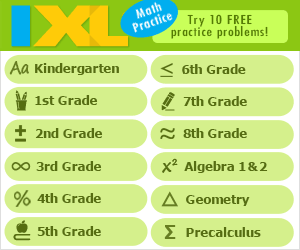5th Grade Science Standards - Life Science
Links verified 9/18/2014
Checks for Understanding (Formative/Summative Assessment)
0507.1.1 Cells - Label drawings of plant and animal cells 0507.1.2 Cell Structures - Compare and contrast the basic structures and functions of plant and animal cells 0507.2.1 Relationships - Evaluate producer/consumer, predator/prey, and parasite/host relationships 0507.2.2 Ecosystem - Classify interspecific relationships within an ecosystem as mutualism, commensalism, or parasitism 0507.2.3 Create a Model - Create a simple model illustrating the interspecific relationships within an ecosystem 0507.2.4 Relationships in Ecosystem - Analyze basic information from a body of text to identify key issues or assumptions about the relationships among organisms in an ecosystem 0507.2.5 Effect on Environment - Create a poster to illustrate how human activities and natural disasters affect the environment 0507.3.1 Photosynthesis - Identify the cell structures that enable plants to conduct photosynthesis 0507.3.2 Food Webs - Design a graphic organizer that illustrates the difference between plants and animals in the movement of food energy through an ecosystem 0507.4.1 Genetics - Explain how genetic information is transmitted from parents to offspring 0507.4.2 Traits - Create a chart that compares hereditary and environmental traits 0507.4.3 Birthmarks - Distinguish between a scar and a birthmark in terms of their origins 0507.5.1 Classification - Classify animals according to their physical characteristics 0507.5.2 Adaptation - Design a model to illustrate how an animalís physical characteristics enable it to survive in a particular environment 0507.5.3 Fossil - Identify the processes associated with fossil formation 0507.5.4 Geologic History - Use fossil evidence to describe an environment from the past 0507.5.5 Fossil History - Use fossils to match a previously existing organism with one that exists today State Performance Indicators
SPI 0507.1.1 Cell Parts - Identify the major parts of plant and animal cells such as, the nucleus, cell membrane, cell wall, and cytoplasm SPI 0507.1.2 Cell Structures - Compare and contrast basic structures and functions of plant and animal cells SPI 0507.2.1 Food Webs - Describe the different types of nutritional relationships that exist among organisms SPI 0507.2.3 Relationships - Distinguish among symbiotic, commensal, and parasitic relationships SPI 0507.2.3 Environmental Impact - Use information about the impact of human actions or natural disasters on the environment to support a simple hypothesis, make a prediction, or draw a conclusion SPI 0507.3.1 Photosynthesis - Identify photosynthesis as the food manufacturing process in plants SPI 0507.3.2 Energy Cycles - Compare how plants and animals obtain energy SPI 0507.4.1 Reproduction - Recognize that information is passed from parent to offspring during reproduction SPI 0507.4.2 Traits - Distinguish between inherited traits and those that can be attributed to the environment SPI 0507.5.1 Adaptations - Identify physical and behavioral adaptations that enable animals such as, amphibians, reptiles, birds, fish, and mammals to survive in a particular environment SPI 0507.5.2 Fossil Clues - Explain how fossils provide information about the past
Search Internet4Classrooms

Custom Search






